Whether you're aiming for a Band 7 or pushing toward Band 9, this guide covers everything you need to know about the IELTS Writing section — including Task 1 and Task 2 formats, band descriptors, common topics, high-scoring strategies, and sample answers. You’ll also find links to in-depth blog posts and tools that help you practice, evaluate, and improve your writing.
Table of Contents
IELTS Writing Test Overview
The IELTS writing section is 60 minutes long and contains two tasks, regardless of whether you're taking the Academic Writing or the General Writing test. However, the content and expectations for Task 1 differ between the two versions, while Task 2 remains largely the same.
- Task 1 (20 minutes):
- Academic Writing Test: Describe visual data (graphs, charts, maps, processes).
- General Training Test: Write a formal, semi-formal, or informal letter.
- Task 2 (40 minutes):
- Write an essay in response to a question. This is the same for both Academic and General IELTS.
Each task is scored based on 4 key criteria: Task Achievement, Coherence and Cohesion, Lexical Resource, and Grammatical Range and Accuracy.
IELTS Writing Band Score Explained
- Task Achievement (TA): Did you answer all parts of the question and stay relevant? Did you fully develop each main idea with explanations, evidence, or examples?
- Coherence & Cohesion (CC): Is your essay logically structured with clear progression and linking words? Did you use a range of cohesive devices naturally, without mechanical or overused linking?
- Lexical Resource (LR): Do you use a wide variety of vocabulary accurately? Did you use vocabulary flexibly to express precise meaning within the scope of the topic?
- Grammatical Range & Accuracy (GRA): Are your sentence structures varied and mostly error-free? Did you keep grammar and punctuation errors occasional and minimal, without reducing clarity?
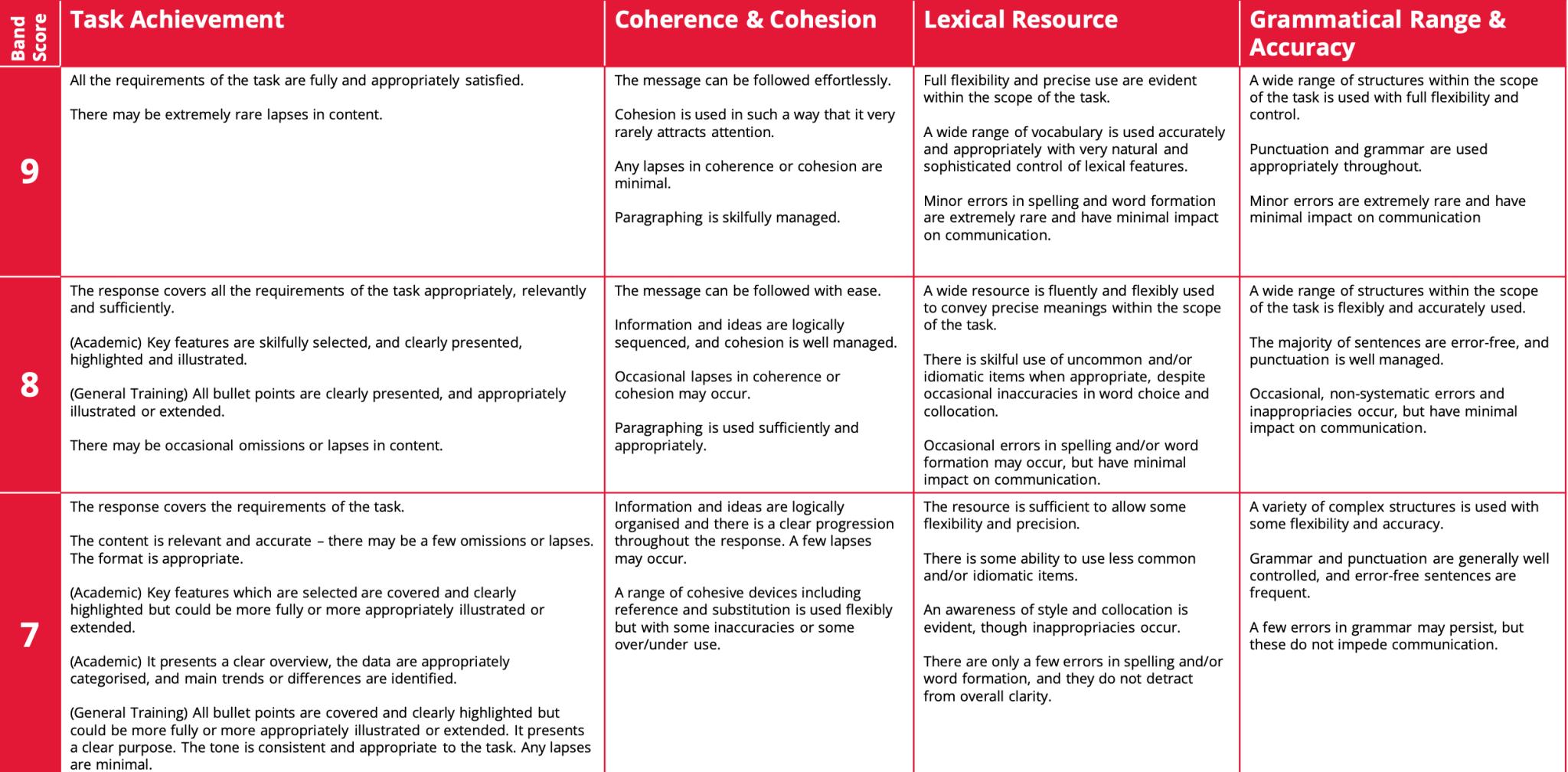
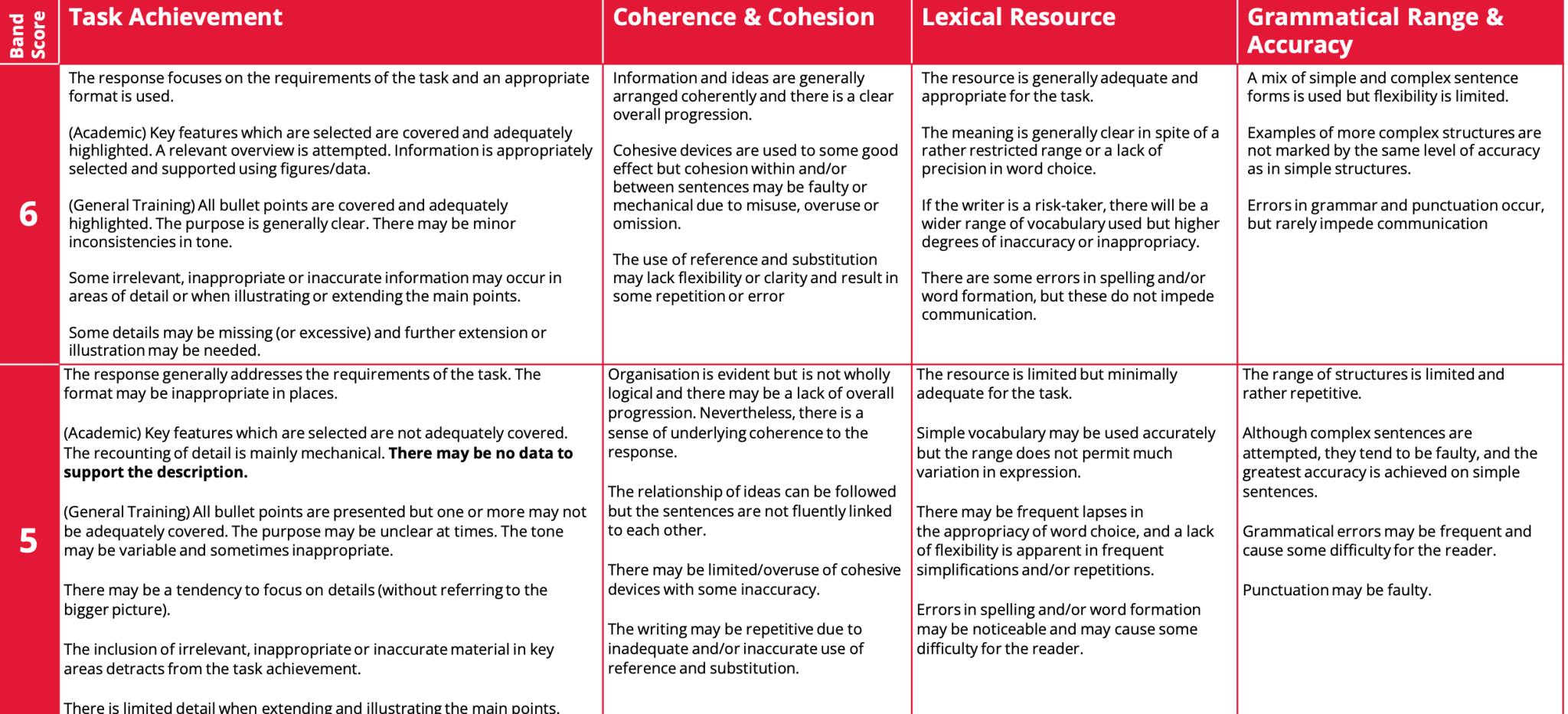

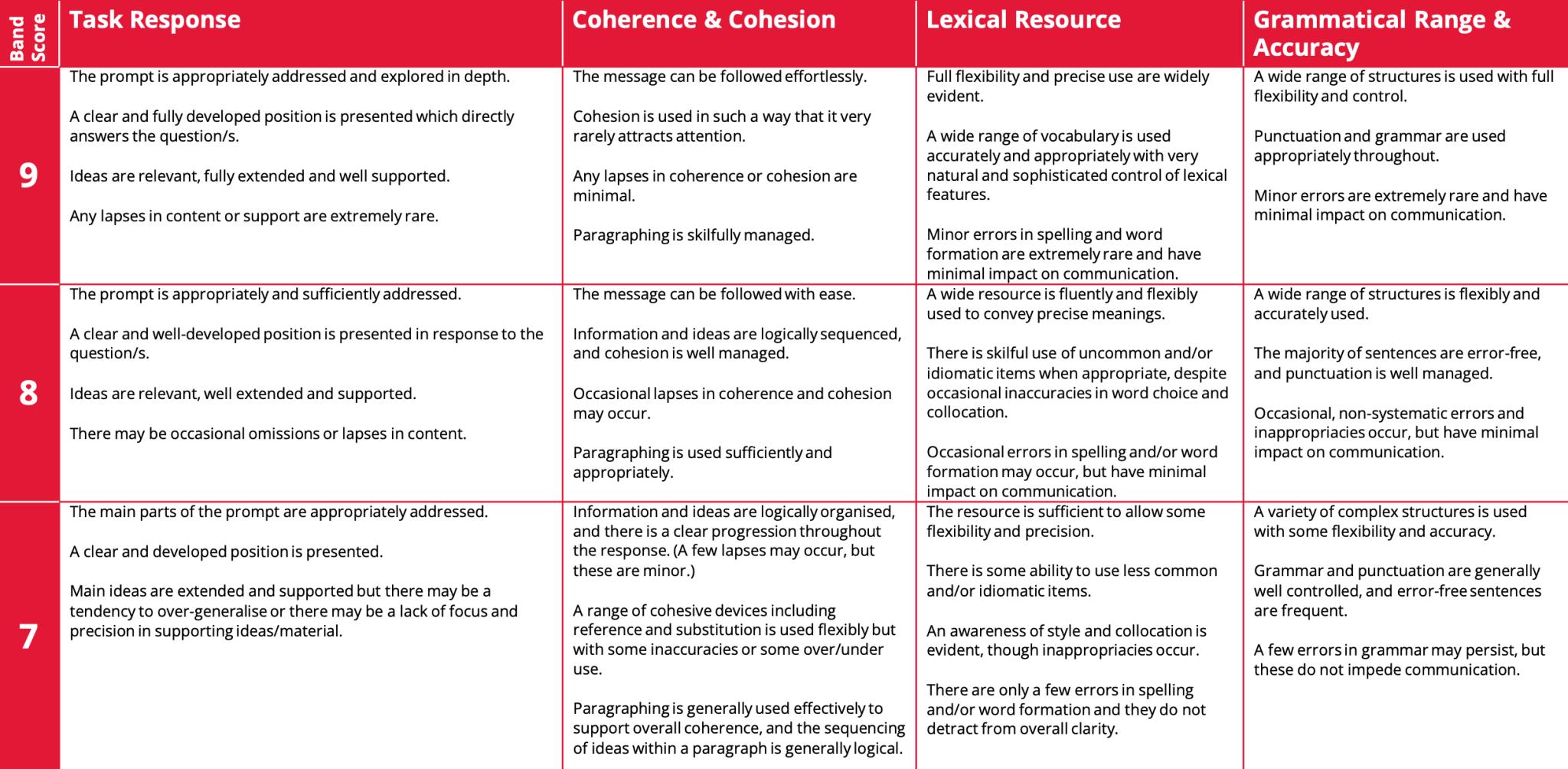
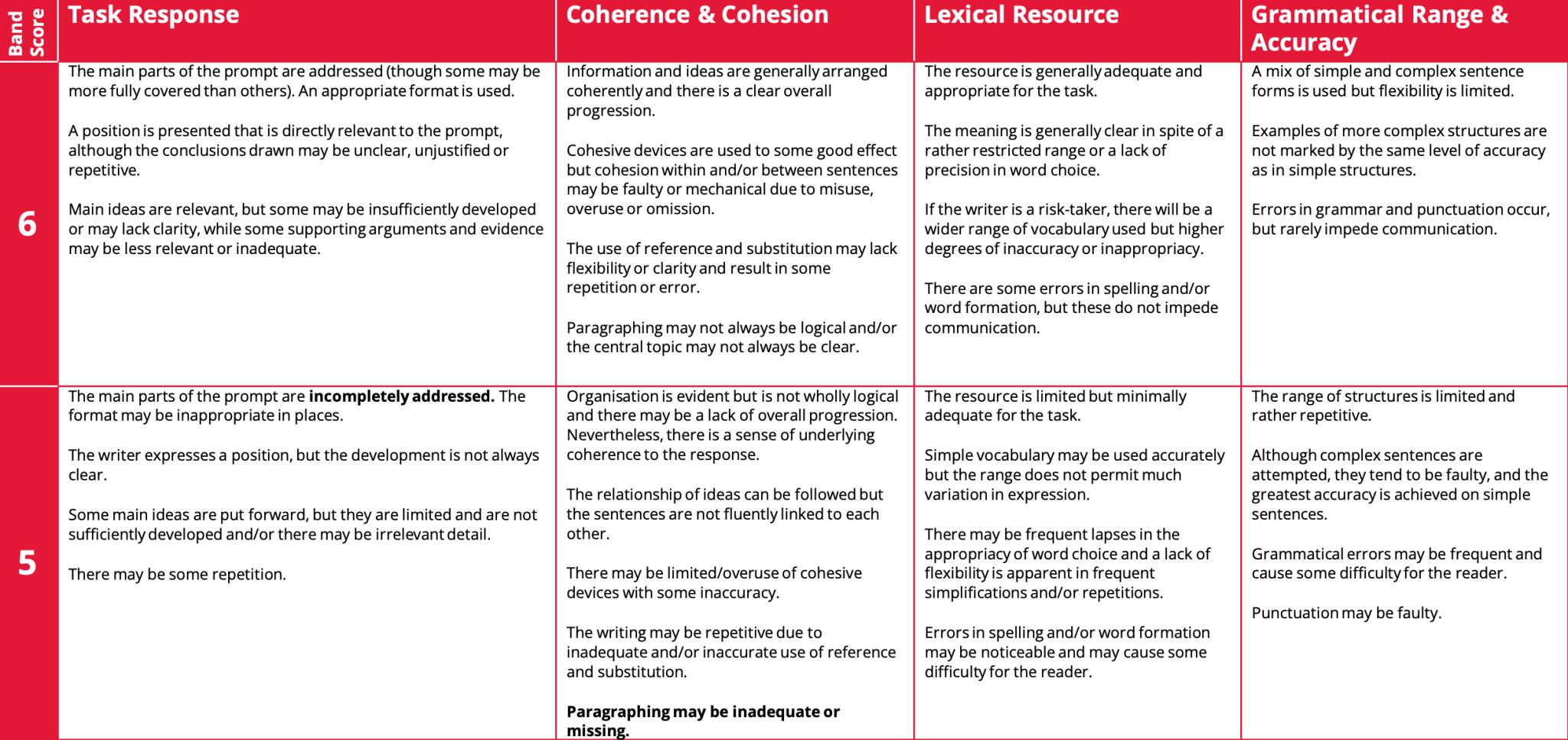
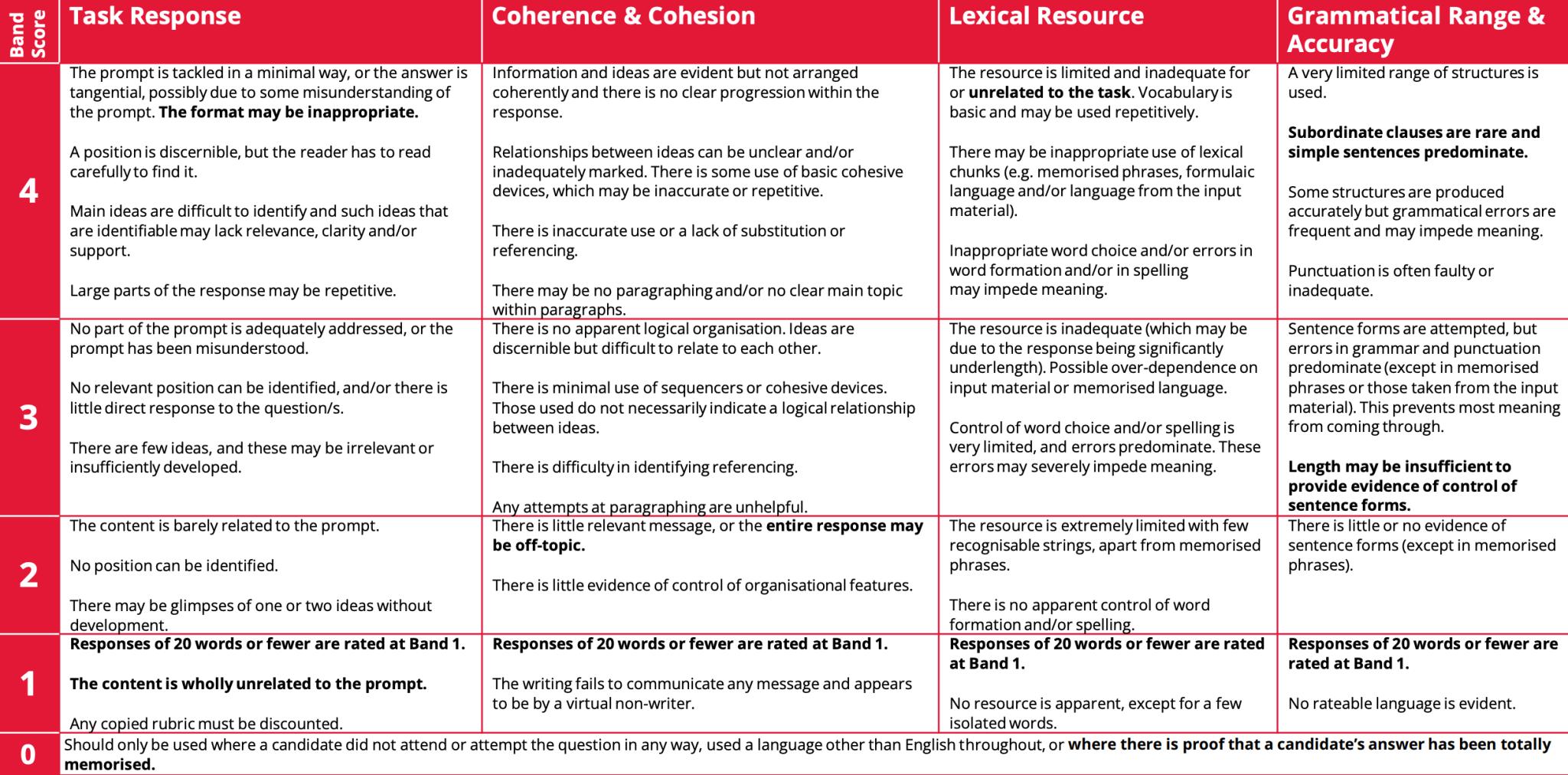
For complete breakdowns and examples, check out our full guide on IELTS band descriptors.
IELTS Writing Samples with Band 5~9 Scores
- IELTS Academic Writing Task 1 Samples
- IELTS Academic Writing Task 2 Samples
- Opinion Essay – Packaging Responsibility Essay (Band 8)
- Advantage / Disadvantage Essay
- Discussion Essay – Environmental Damage: Causes & Solutions (Band 8)
- Problem-Solution Essay – Job Satisfaction vs. Job Security (Band 8)
- Double Question Essay
IELTS Writing Task 1 Guide: Format & Strategies
Academic Writing Task 1
In Task 1 Academic Writing, you’ll be asked to describe and summarize visual information with at least 150 words. This may include:
- Line graphs, bar charts, pie charts, etc.
- Tables or maps
- Diagrams of a process or machine
You must:
- Identify key features or stages
- Compare and report trends, differences, or steps
- Remain objective: do not express opinions or reasons unless the data explicitly suggests them
What Types of Visuals Can Appear?
1. Line Graphs
The chart below shows the changes of average monthly salary and prices of black and white, and color TV in Japanese Yen from 1953 to 1973.
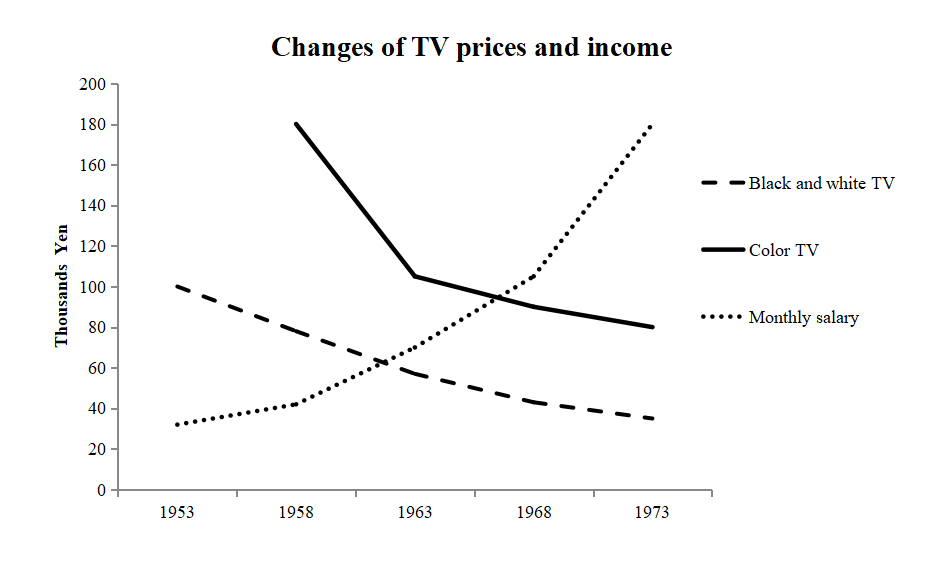
Used to show: Trends over time (e.g., population growth, price changes)
Strategy:
- Identify overall trend (increase, decrease, fluctuations, stability)
- Compare time periods or categories
- Group similar lines (e.g., “Both A and B declined after 2000…”)
- Use time-specific verbs (e.g., rose, dropped, peaked, leveled off)
Useful phrases:
- “From 1990 to 2000, the figure increased steadily…”
- “The rate fluctuated before leveling off…”
2. Bar Charts
The charts below show the number of rural and urban people born in and outside Australia in 1950 and 2010.
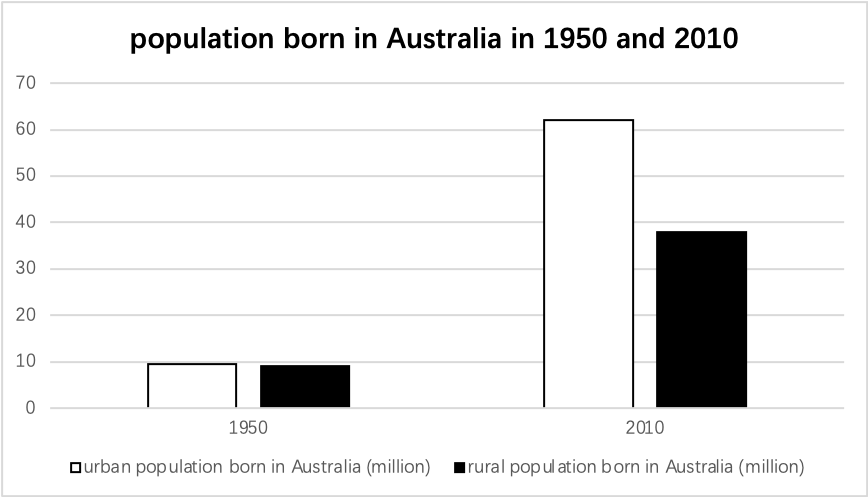
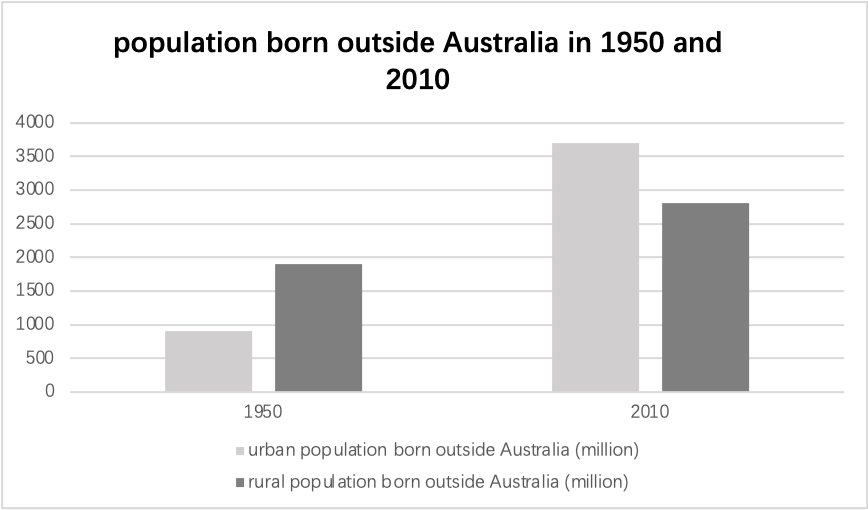
Used to show: Comparisons between categories (e.g., sales by region)
Strategy:
- Group bars with similar values or trends
- Highlight extremes (e.g., highest, lowest)
- Compare across axes (e.g., gender vs. year)
Common mistake: Listing every bar’s value instead of grouping or summarizing
Useful phrases:
- “The highest proportion of… was observed in…”
- “In contrast, X had the lowest rate at…”
3. Pie Charts
The charts below show the qualification of graduates at an engineering company in 1988 and 2008.

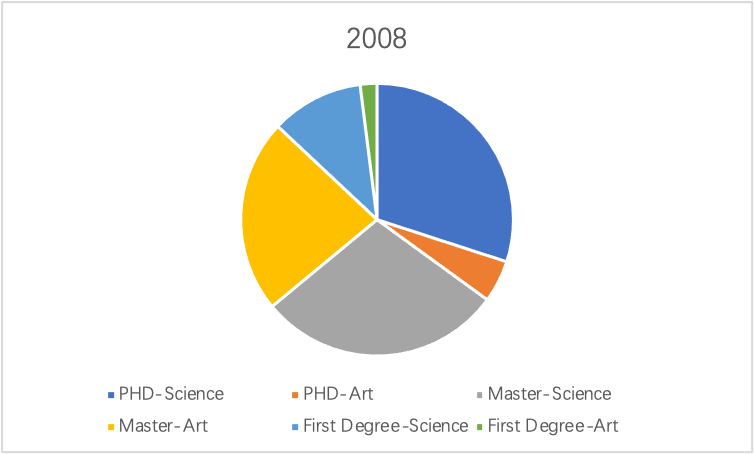
Used to show: Proportional data at one or more time points
Strategy:
- Describe major segments first
- If two pie charts are shown, compare key changes
- Mention percentages (use fractions for variation: “a quarter,” “half”)
Watch out: Avoid calculating differences unless provided
Useful phrases:
- “X accounted for nearly half of the total…”
- “There was a slight increase in Y’s share…”
🔗 Learn more in our Task 1 Graph & Chart Writing Guide.
4. Tables
The tables below show the questionnaire about the opinions of club members and the general public for the new theater in one town in 2012.
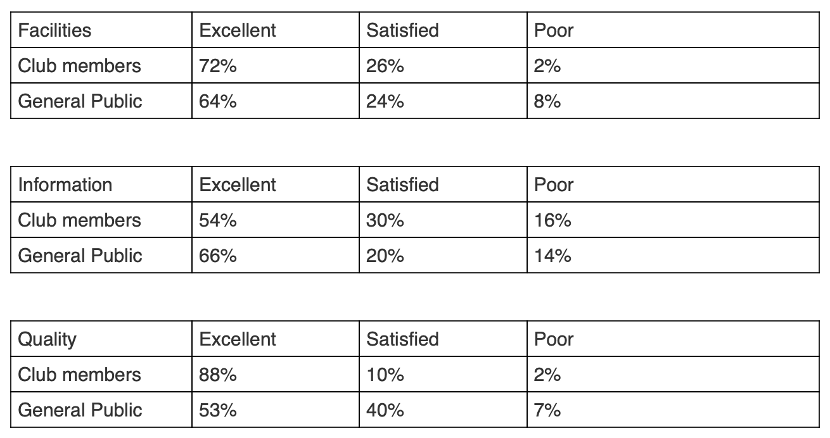
Used to show: Data in rows/columns — may include time, categories, comparisons
Strategy:
- Summarize patterns, not individual data points
- Identify highest/lowest values, patterns across rows/columns
- Group values if they show similar trends
Useful phrases:
- “The majority of… recorded values above…”
- “Notably, only two countries showed a decline…”
5. Diagrams (Processes or Machines)
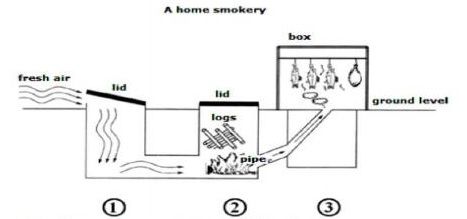
Used to show: How something works (e.g., water cycle, manufacturing)
Strategy:
- Use present simple (if it’s a natural or mechanical process)
- Describe the sequence clearly — use connectors (first, then, next, finally)
- Mention materials, actions, and outcomes at each stage
Useful phrases:
- “The process begins when…”
- “Next, the liquid is filtered through…”
6. Maps
The maps below show how a coastal town developed between 1950 and 2007.
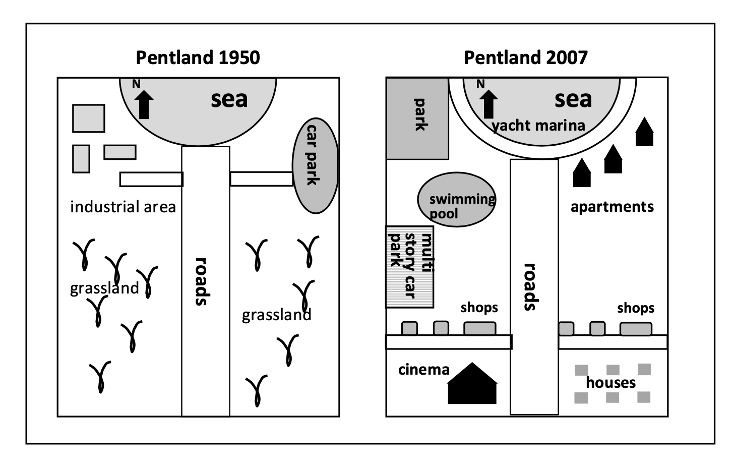
Used to show: Changes in a place over time or differences between two areas
Strategy:
- Focus on location changes, new/removal of features
- Use directional language (north of, beside, to the east, etc.)
- Tense: Past if showing historical change
Common mistake: Forgetting to mention compass directions
Useful phrases:
- “The park was replaced by…”
- “A new residential area was built to the west…”
7. Mixed Graphs
The chart below gives information about the high-speed continuous internet connection of households in five countries in 2001 and 2002.
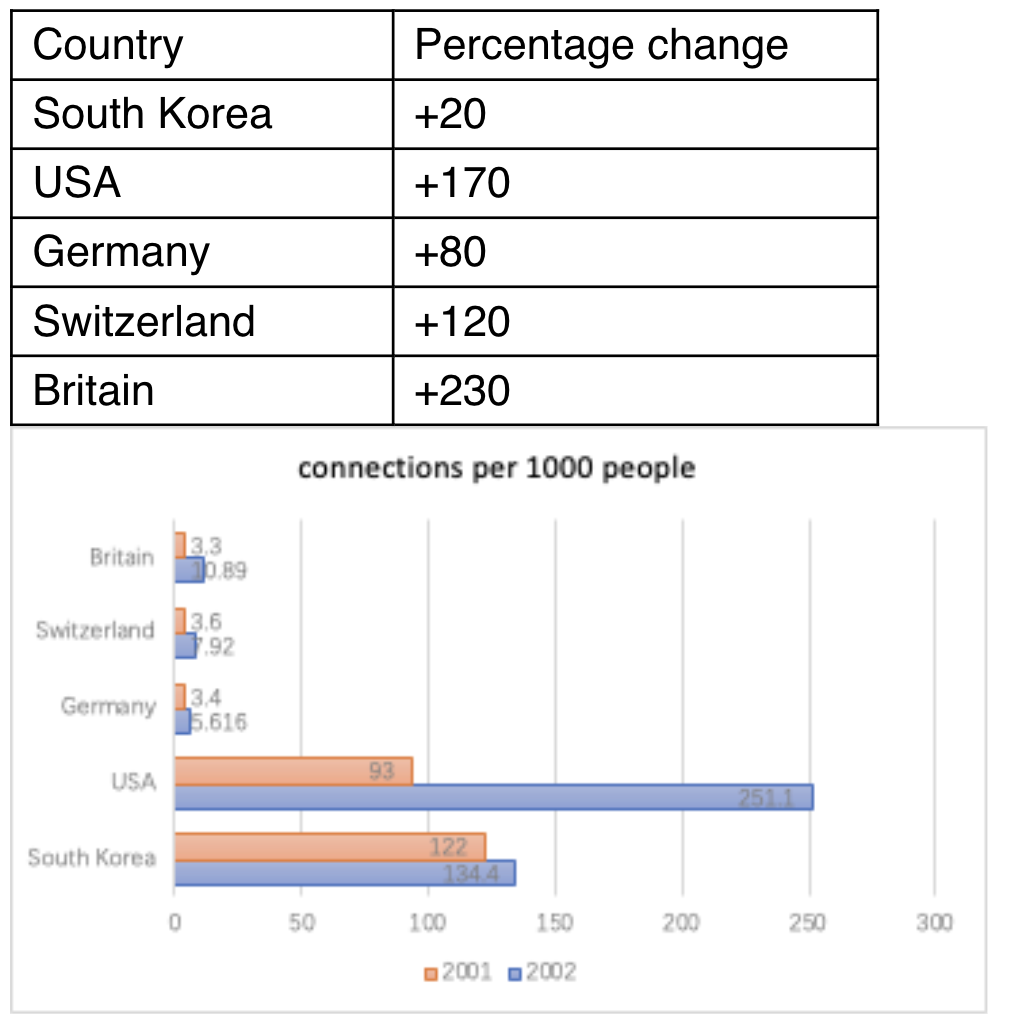
Used to show: Two or more visuals (e.g., bar + pie, line + table)
Strategy:
- Integrate insights across all visuals
- Identify if the visuals show different aspects of the same topic
- Avoid treating each separately — compare them where possible
Useful phrases:
- “While the pie chart illustrates…, the bar graph compares…”
- “Taken together, both visuals highlight…”
IELTS Writing Task 2 Guide: Essay Types & How to Approach Them
Task 2 is longer and contributes more to your writing score. You’ll write an academic-style essay at a minimum of 250 words, based on a question prompt.
- Opinion (Agree or Disagree): Opinion Essay Strategy Guide
- Advantages and Disadvantages: Advantages/Disadvantages Essay Guide
- Discussion (Both Views + Your Opinion): Discuss Both Views Guide
- Problem and Solution: Problem-Solution Writing Guide
- Double Questions: Double Questions Essay Guide
Tips for Task 2:
- Take 5 minutes to plan before writing.
- Use topic-specific vocabulary to boost your Lexical Resource score.
- Don’t use bullet points. Structure your essay into 4–5 clear paragraphs.
Practice with AI: Instant Feedback on Your Writing
Want to practice the IELTS Writing Part and know your scores before test day?
With LingoLeap's AI Writing Coach, you can:
- Practice with authentic IELTS writing questions
- Get AI-powered feedback on grammar, logic, and coherence
- Gain high-scoring sample answers for every essay type
- Track your progress with instant band scores
Start your free trial today to hone your writing skills and knock out that perfect score!
FAQs: IELTS Writing
- How long should I spend on each task? 20 mins on Task 1, 40 mins on Task 2. There's no separate time limit, but Task 2 carries more weight.
- Can I use personal examples in Task 2? Yes, if they support your argument logically.
- What are the most common IELTS writing topics? Environment, education, health, technology, and work-related themes.
- Will spelling mistakes lower my score? Yes — especially under Grammatical Accuracy.
- What if I write fewer than the word limit? You'll lose marks for Task Achievement.
Where to Go Next
- Browse All 2025 IELTS Writing Topics & Templates
- Check Out IELTS Speaking Topics
- Explore IELTS Reading Strategies
- Try a Full IELTS Practice Test on LingoLeap
If you're preparing for IELTS Writing, this guide gives you a full overview of what to expect and how to succeed. For detailed strategies, sample essays, and AI-powered practice tools, just click the links throughout this guide to explore more.